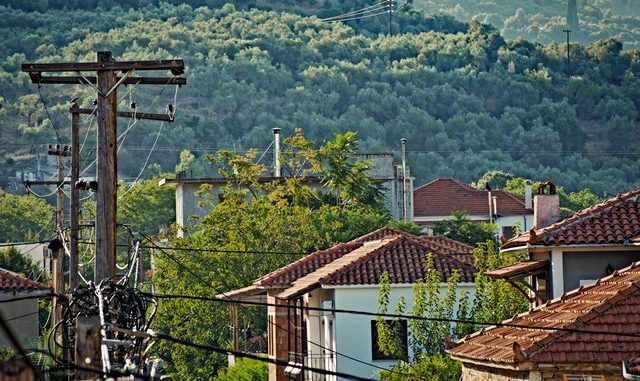
A modern convenience often taken for granted, electric power, can be found everywhere. To route electricity from the power station to your wall outlet requires many steps. Residential house wiring includes a variety of wiring and control devices to ensure safe and reliable service.
Generation
Electric power is produced by a generator. In a power plant, massive generators turn using turbines, which themselves rotate by steam or by flowing water. A hydroelectric dam uses falling water to turn a turbine, while a coal or nuclear plant boils water.
The steam it produces feeds in through a turbine. The generated power is therefore stepped up in voltage with a transformer and transmitted through the electric grid. A second transformer used near the home reduces the voltage back down to a normal household level, typically 120V.
Service Wiring
Service conductors connect the service transformer to the electrical metering cabinet. This device measures the home’s power usage and ensures fair billing from the utility company. After the metering cabinet, service conductors feed into the home panel’s main breaker. Furthermore, everything up to and including the main breaker is considered part of the service wiring and should not be modified by the homeowner.
The size of the main breaker and the service conductors are determined by the total expected load of the home and therefore based on the square footage and any large electric appliances. A typical home might have a 100A or 110A main breaker.
Distribution Panel
Electricity in the home is distributed by means of branch circuits. Furthermore, each branch circuit is supplied via a circuit breaker sized per the expected load on the circuit. A typical lighting and receptacle circuit will be rated at 15A. Because of their size, larger loads like ovens, clothes dryers, and air conditioning units are given dedicated circuit breakers.
A typical home can have dozens of 15A circuits, and several 20A, 30A, or even 50A circuits. Yet the total of all these breakers is much more than the size of the main breaker. However, this is intentional. It’s highly unlikely that every circuit will be fully loaded at any one time, so a demand factor is taken into account to keep the main breaker at a reasonable size.
Residential House Wiring
A wood-framed home will typically use solid copper non-metallic sheathed cable for the majority of wiring applications. Solid conductors are easy to terminate and cheaper than equivalent stranded wire. The AWG size of the wire is determined by the expected load on the circuit and by the size of the breaker protecting it. You should never connect a wire to a breaker that is too large to protect it, as an overloaded wire can easily catch fire.
Arc-Fault and Ground-Fault Protection
Ground fault protected circuits are required for outdoor receptacles and in specific locations where there may be water or moisture present. Available as breakers or as receptacles, GFI protection will detect if any current is leaking to the electrical ground. This indication of a fault may not be detected by a standard breaker.
An arc-fault circuit interrupter (a requirement in most residential outlets) detects small arcing faults. These sometimes occur in damaged cords or faulty electrical equipment. In addition, it ignores normal operational arcs, such as when a switch is flipped on. Also available as a breaker or as a receptacle, these devices reduce the chance of electrical fires. A leading cause of residential fires in North America includes faulty outlets and plugs.
Understanding the basics of residential house wiring remains vital to a safe and reliable electrical installation. Hence, knowledge remains power in the most literal interpretation.

